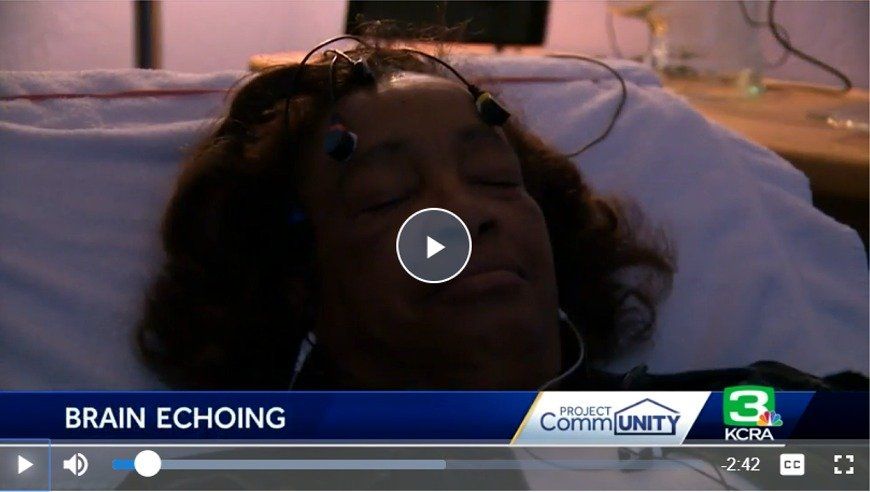Fair Oaks Cereset
Relax. Rebalance. Reset.
Nicotine Use
An estimated 62.9 million people in the US use nicotine, which includes cigarettes, vape pens, and nicotine patches or gum.
This represents nearly 20% of the population.
New Paragraph
New Paragraph
An estimated 62.9 million people in the US use nicotine, which includes cigarettes, vape pens, and nicotine patches or gum. This represents nearly 20% of the population.
Nicotine is a powerful and popular stimulant that activates the nervous system and is highly addicting.
Nicotine, the primary addictive substance in tobacco products, profoundly affects the brain and its electrical activity. Acting as a stimulant, nicotine quickly reaches the brain, altering neural signaling, electrical patterns, and long-term brain health.
While nicotine acts very quickly with almost immediate effects, it also leaves the system just as fast, causing a rapid detox. The discomfort from the nicotine detox, which can start almost as soon as the user finishes a cigarette, makes quitting extremely challenging.
As a result, our understanding of how nicotine appears in brain data relies entirely on whether the client is experiencing withdrawal effects. It's important to note that while the official half-life of nicotine is 2 hours, mild withdrawal can start almost immediately after a client finishes a cigarette or other nicotine product due to the rapid detox process.
Here’s a closer look at how nicotine influences the brain in the short and long term, along with its effects on brain data.
THE SHORT-TERM EFFECTS OF NICOTINE ON THE BRAIN
When nicotine enters the brain, it binds to nicotinic acetylcholine receptors (nAChRs), triggering the release of mood-boosting neurotransmitters like dopamine, norepinephrine, and acetylcholine. These effects lead to:
- Dopamine Release (The Reward Effect): Nicotine stimulates dopamine release in the brain’s mesolimbic reward system, creating feelings of pleasure, satisfaction, and reinforcement. This is why nicotine is highly addictive—each use strengthens the brain’s association between nicotine and reward, making quitting difficult.
- Increased Alertness and Focus: By stimulating acetylcholine and norepinephrine, nicotine enhances alertness, reaction time, and attention. Many users report feeling more focused and mentally sharp shortly after using nicotine.
- Temporary Mood Regulation: Nicotine can act as both a stimulant and a relaxant. While it initially increases serotonin and endorphins, leading to temporary stress relief, this effect is short-lived. Over time, the brain adapts, leading to increased anxiety and irritability when nicotine levels drop.
THE LONG-TERM EFFECTS OF NICOTINE ON THE BRAIN
Chronic nicotine use leads to both structural and functional changes in the brain:
- Neuroadaptation: The brain decreases the number or sensitivity of nAChRs receptors with repeated stimulation, leading to physical dependence and mental addiction to nicotine. In short, more nicotine is required to provide the same “boost” users are after.
- Cognitive Decline: The prefrontal cortex, responsible for decision-making and impulse control, shrinks with prolonged nicotine exposure, leading to impaired attention, memory, and decision-making.
- Brain Rewiring: Nicotine can also disrupt communication between brain regions, specifically between the prefrontal cortex, amygdala, and reward centers, reinforcing addictive behavior. This rewiring prioritizes nicotine-seeking behavior over rational decision-making.
- Mood Disorders: Chronic nicotine use is linked to higher rates of depression and anxiety due to disrupted dopamine regulation.
- Chronic Hyperarousal: Long-term nicotine use increases cortisol levels (a key stress hormone) in the brain, keeping the brain in a heightened stress state. This constant hyperarousal contributes to restlessness and agitation and increases vulnerability to stress-related disorders.
- Brain Aging: Nicotine can accelerate brain aging and contribute to neurodegenerative diseases by increasing oxidative stress and inflammation.
- Increased Risk of Neurodegenerative Diseases: Emerging research suggests a link between long-term nicotine use and an increased risk of Alzheimer’s and Parkinson’s disease. While nicotine has some neuroprotective properties, its long-term effects on brain inflammation and oxidative stress may contribute to neurodegeneration.
NICOTINE’S IMPACT ON BRAIN DATA
Nicotine significantly alters brain electrical activity, leading to measurable changes across various frequency bands. However, how nicotine use manifests in brain data depends entirely on whether the brain is experiencing nicotine withdrawal.
Because nicotine leaves the system quickly, tech coaches are more likely to see withdrawal effects in the brain data rather than the more immediate stimulation effects that occur during active use or shortly after it.
DATA CHANGES: RECENT NICOTINE USE
When a client has recently used nicotine, and the brain is not experiencing a high level of withdrawal or detox, you may observe the following changes in the data:
- Increased amplitudes at the 40/50 bands, especially at F3F4, P3P4, and O1O2. The 40/50 bands increase with relaxation and sensations of satisfaction, which can cause these amplitudes to activate artificially with nicotine use.
- Increased amplitudes in the high frequencies at FP1FP2, F3F4, and P3P4. This activation is caused by the stimulating effects of nicotine, increasing alertness, energy, and cognitive engagement. With long-term nicotine use, the high frequencies may become consistently over-activated as the brain becomes overstimulated. Chronic overstimulation may lead to anxiety, racing thoughts, increased distractibility, and rumination.
- A noticeable decline in the amplitudes in the 20/30 bands, especially at F3F4, P3P4, and T3T4, which are often associated with creativity and memory formation.
- High coherence at F3F4, C3C4, and/or P3P4 in the low and/or mid frequencies (see the example data below when the client was actively using nicotine).
- Active Nicotine Use: High Coherence in the Low Frequencies • Download
- Nicotine (i.e., stimulant use) is very common among clients in a T3 (left temporal lobe imbalance)/freeze state, as stimulants temporarily activate the brain, creating an artificial sense of balance and equilibrium. Clients stuck in a freeze state will often subconsciously seek out stimulants like nicotine, as these substances will help the brain find temporary relief and balance.
- Chronic, long-term nicotine use triggers the overproduction of cortisol (a stress hormone), which can cause the brain to enter a persistent fight-or-flight state (T4 imbalance). If a client is actively using nicotine and has an imbalanced T4 (right temporal lobe), you can assume their system is highly overstimulated. As a result, the client is likely using a relaxant or another sedative alongside nicotine to help their brain cope. Quieting the T4 imbalance may be challenging if the client continues to use nicotine.
- The left frontal lobe (F3) is often over-stimulated in the high frequencies with long-term nicotine use, which can increase impulsivity and create difficulties with self-regulation. The left frontal cortex also interacts with the dopamine-driven reward system, meaning increased activation may encourage addictive behaviors (i.e., nicotine, gambling, excessive workaholism).
DATA CHANGES: NICOTINE WITHDRAWAL
If the client has not used nicotine for several hours or more, or if they have recently quit nicotine or started a taper, their brain will likely be experiencing some degree of moderate to intense withdrawal detox. In this case, you may observe the following changes in the data:
- Significant activation of low-frequency amplitudes (00/10 bands and 20/30 bands) in most brain lobes, especially at FP1FP2, F3F4, C3C4, and T3T4. This activation may slow cognitive processing and limit emotional regulation abilities. Excessive low frequencies may also indicate fatigue and sluggishness, which are often associated with nicotine withdrawal.
- Weak mid-frequency amplitudes (the 40/50 bands are lower in amplitude than the 00-30 bands) at F3F4, P3P4, and O1O2 may indicate that the system is stressed, energy resources are low, and the client likely struggles with a low sense of well-being.
- Weak high-frequency amplitudes at F3F4 and P3P4 often correlate with cognitive sluggishness and potentially poor self-regulation abilities.
- Residual high coherence at F3F4, C3C4, and/or P3P4 in the low or mid frequencies.
- Stimulant use is very common in clients who are stuck in a T3/Freeze state, as stimulants provide the brain with a temporary activation that creates an artificial balance. However, as the brain detoxes, the temporals may flip to a T4 activation, especially in the high frequencies, as the body and brain detox.
- Long-term nicotine use can lead to chronic over-activation in the left frontal lobe (F3), potentially increasing impulsivity and difficulty with self-regulation.
HOW TO SUPPORT YOUR CLIENTS
The method for best supporting your client depends on where they are in their nicotine journey: are they actively using, tapering, or discontinuing?
HOW TO HELP: ACTIVE NICOTINE USE
Suppose they are still actively using nicotine and have not made any attempts to reduce or minimize their use. In that case, their data patterns will likely fluctuate daily, making targeting specific issues in the data difficult.
- If data patterns fluctuate frequently (i.e., low frequencies are significantly activated in one session but not the next), continue to use SOP as the primary source of support, which will adjust to these fluctuations (see example data below of low frequencies activating unpredictably).
Low-frequency flooding may indicate nicotine withdrawal • Download
- You will also want to address any high coherence that shows up in the data at F3F4, C3C4, and/or P3P4 in the low or mid frequencies.
- If T3 is consistently imbalanced, achieving balance in the temporal lobes will be vital to supporting the client long-term.
- If there is a moderate to significantly imbalanced F3 imbalance in the high frequencies, use a targeted quiet to relax F3 in the high frequencies. This may help alleviate cravings and impulsive behaviors and actions.
HOW TO HELP: TAPERING OR RECENT DISCONTINUATION OF NICOTINE
If the client has recently quit nicotine or has begun to reduce their use of nicotine, you can support their brain in the following ways:
- Address any high coherence in the data at F3F4 and/or P3P4.
- Relax consistent low-frequency over-activation wherever it is present, especially at FP1FP2, F3F4, C3C4, and/or T3T4. Focus low-frequency quiet protocols wherever amplitudes are the strongest. For example, if low frequencies are approximately 30uv at F3F4 and C3C4, but amplitudes are 45uv at FP1FP2s, you would first target the frontal poles.
- If mid-frequency amplitudes at P3P4 and/or O1O2 are weak (the 40/50 bands are lower in amplitude than low-frequency amplitudes), consider supporting the mid frequencies. Run the support design on whichever montage has the weakest mid-frequencies. If mid frequencies are low at P3P4 AND O1O2, you may consider a mid-frequency support of the back midline at PZ OZ. Remember, only run one support protocol per session, and do not run a support protocol if you are using MCD or AAD!
- Activity at T3T4 will likely be very unstable due to detoxing, and you may see a lot of flipping between T3 and T4. Use two-channel quiets to relax T3 and T4 together and help stabilize the temporal lobes.
- Long-term nicotine use can lead to chronic over-activation in the left frontal lobe (F3), potentially increasing impulsivity and difficulty with self-regulation. However, in some cases of detox, the right side may flip dominance, indicating the client is struggling with negative thinking, cravings, and reduced focus. Consider using a two-channel quiet to relax F3 and F4 together in the high frequencies, which may help stabilize the frontal lobes.
- F3 HF imbalance is common with nicotine use • Download
HOW TO ADVISE YOUR CLIENT
Clients frequently want to know whether they should continue using nicotine during the sessions, try to reduce their nicotine use during the course of sessions, or attempt to quit “cold turkey” before starting sessions.
Quitting nicotine cold turkey will create some discomfort and withdrawal symptoms. While Cereset sessions may help the brain to adjust through the detox process faster and more efficiently than without sessions, there will still be discomfort involved, and the client will still experience withdrawal symptoms. In addition, stopping nicotine cold turkey can cause the brain’s stress system to activate, which may limit the brain’s ability to relax and respond during sessions.
If a client feels that the discomfort from nicotine withdrawal may hinder their ability to relax during the sessions, it's not recommended that they quit cold turkey before starting the sessions. Instead, we would recommend that the client consider a taper and make gradual steps down in their nicotine use.
If a client makes no changes to their nicotine use, it may be difficult to achieve relaxation of the temporal lobes (the autonomic nervous system) because of the overproduction of stress hormones triggered by long-term nicotine use. If you find there is limited relaxation in the temporal lobes, you may consider discussing the option of tapering with the client again.
Ultimately, whether to quit, taper, or continue using nicotine is entirely up to the client and their readiness to “quit”. However, the client is likely to make the best progress if they are working to steadily reduce their use of nicotine over the course of 2-4 weeks. At the end of 2–4-week taper, the goal would be to discontinue nicotine entirely.
Weekly Tune-Up Sessions are recommended for several weeks after discontinuing nicotine use to provide the brain with ongoing support during this transition period.
To help facilitate these conversations with your client, we have a new client handout:
- First Responder
- Observed Trauma
- Stress
- Father & Husband
- Working Wife & Mom
- 2 sons High Functioning Autism
- Speech & Meltdowns
- Retired Air Force
- PTSD & MST
- Fearful & Night Terrors
- Business Executive
- Peak Performance
- Anxiety & Jet Lag
- Successful International Travel
- Engineer, Business owner
- Stress moving Home & Business in 4 days
- Treating others more productively
- Professional Artist & Art Therapist
- Husband's sudden death
- Lost everything in first minutes of Sonoma Wild Fire
- Sleep, productivity & attention Issues
- Creative spark returned
- Husband's experience
- Divorce
- Experience during sessions
- Cognitive clarity
- Artist Wife
- Husband's concussion
- Anxiety & Sleep
- CPA Business Owner
- Peak Executive Performance
- Autistic Sons
- Professional Success - Dream Job
- ADD - Attention Deficit Disorder
- Sports Head injuries -
- Semi-pro Soccer
- Sailing
- Focus
- BWO is the predecessor to Cereset
- Owner & Cereset Technician
- Why I was looking for Cereset
- Why I am so happy with the results
Rustin Rusello Pastor's Perspective
- We are working for a similar video not private.
- A Pastor's Perspective
- Executive Performance
- Family
- This is not from Fair Oaks
Founder Lee Gerdes
- Why I did it
TV Interviews - Fair Oaks & others
- NBC North Dakota Today
- Dr. Ala Lysyk
- NBC North Dakota Today
- Dr. Ala Lysyk
- Car Accident Concussion
- Headaches, fatigue, light & noise sensitivity.
- Woke up after 3rd session and "my world had changed".
- NBC North Dakota Today
- Dr. Ala Lysyk
- Post Holiday Blues
- Start the Year strong
Sports
- Concussion
- ADD
- Sports Head injuries -
- Football
- PLayed Football from age 10 to 38
- NFL Player
- ESPN Commentator
- Sleep, moods, concussions
- Baseball
- Football
- Concussion
- Depression, Anxiety, memory loss
- Multiple Sports Head injuries
- NFL Football
- Professional Success - Dream Job
- ADD - Attention Deficit Disorder
- Sports Head injuries -
- Semi-pro Soccer
- Sailing
- Focus
- BWO is the predecessor to Cereset
Military / First Responders
Music / Art
- Starts Minute 19:27
- Her Work with Cereset
- Part II of an interview
- Singer Song Writer
- Podcast on John Tesh Network
- Professional Artist & Art Therapist
- Husband's sudden death
- Lost everything in first minutes of Sonoma Wild Fire
- Sleep, productivity & attention Issues
- Creative spark returned
Articles
Research
Message Fair Oaks Cereset
Permission to reprint our articles will most likely be granted
but we request a contact first please. © 2022
- Owner Fair Oaks Cereset
- Navy Veteran
- Neuromuscular Therapist
- Cereset Tech Coach













